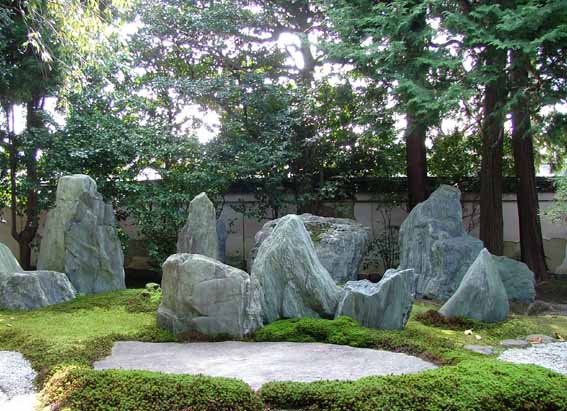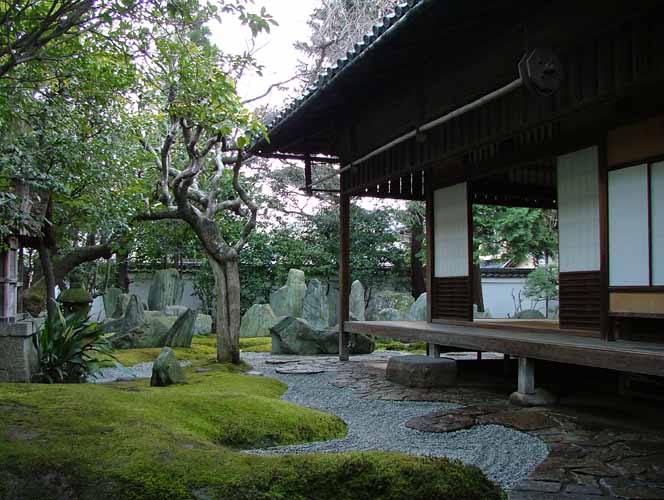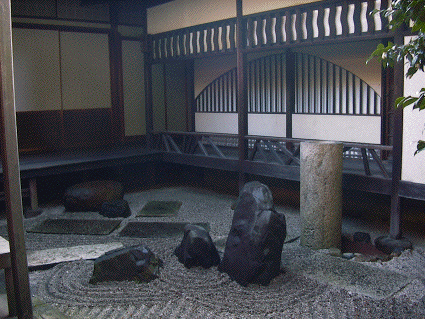The Shigemori Resodence is a traditional town house dating from the middle Edo period (1789) with an adjoining garden and tea ceremony pavilions (Muji-an, 1953 and Koukoku-an, 1969). Both garden and pavilions were designed by Mirei Shigemori, seminal 20th century architect of Japanese garden, author of the Hojo Garden, Tofukuji Temple (1939) amongst over ninety religious and domestic gardens. The house belonged to the Shinto order, "Suzuka", of nearby Yoshida Shrine and was acquired from the order by Shigemori for his family in 1943.The main garden consists of four rock configurations symbolizing the Elysian islands: Hojo, Eiju, Horai (central island) and Koryo placed on the sand garden. Horai island consists of a crane style rock composite and Hojo, a tortoise style rock composite. The stones known as "blue rock" in the Awa region of Japan are mainly from Shikoku island. The garden is overlooked by a veranda and a sparse main room with shoji screens, tatami mats and a hanging paper light conceived specially by Isamu Noguchi. The tea cermony pavilion is a rich hybrid of traditional and modern design. In contrast to the shrines and temples of the city, the house is domestic in scale and is connected to the rhythms of everyday life.
Main room ( shoin), 1789
Tea ceremony pavilion ( Koukoku-an), 1969

Main garden, 1970

View from tea ceremony pavilion

Courtyard garden (tsubo-niwa)
Mirei Shigemori Residence
34 Kamiojicho, Yoshida Sakyoku, Kyoto 606-8312, Japan
Fax +81 (0)75 761 8776 E-mail shima753@hotmail.com
Due to limited access by reservation only
Visit tour : Japanese only
home | site | project | seminar | association | map | contact | archives |